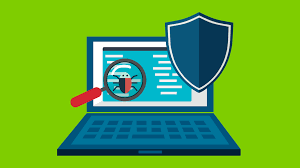Spyware
All About Spyware
When you go online, don’t assume that your privacy is secure. Prying eyes often follow your activity—and your personal information—with a pervasive form of malicious software called spyware. In fact, it’s one of the oldest and most widespread threats on the Internet, secretly infecting your computer in order to initiate a variety of illegal activities, including identity theft or a data breach. It’s easy to fall prey to and can be hard to get rid of, especially since you’re most likely not even aware of it. But relax; we’ve got your back with all you need to know about what spyware is, how you get it, what it tries to do to you, how to deal with it, and what to do to avoid future spyware attacks.
What is spyware?
Spyware. Although it sounds like a James Bond gadget, it’s actually a type of malware that infects your PC or mobile device and gathers information about you, including the sites you visit, the things you download, your usernames and passwords, payment information, and the emails you send and receive.
 No big surprise—spyware is sneaky. It finds its way on to your computer without your knowledge or permission, attaching itself to your operating system. You might even inadvertently permit spyware to install itself when you agree to the terms and conditions of a seemingly legitimate program without reading the fine print.
Whatever way spyware manages to get on your PC, the method of operation is generally the same—it runs quietly in the background, maintaining a secret presence, collecting information or monitoring your activities in order to trigger malicious activities related to your computer and how you use it. And even if you discover its unwelcome presence on your system, Spyware does not come with an easy uninstall feature.
No big surprise—spyware is sneaky. It finds its way on to your computer without your knowledge or permission, attaching itself to your operating system. You might even inadvertently permit spyware to install itself when you agree to the terms and conditions of a seemingly legitimate program without reading the fine print.
Whatever way spyware manages to get on your PC, the method of operation is generally the same—it runs quietly in the background, maintaining a secret presence, collecting information or monitoring your activities in order to trigger malicious activities related to your computer and how you use it. And even if you discover its unwelcome presence on your system, Spyware does not come with an easy uninstall feature.
How do I get spyware?
Spyware can infect your system in the same ways as any other form of malware. Here are a few of spyware’s main techniques to infect your PC or mobile device.
- Security vulnerabilities e.g. backdoors and exploits. An exploit is a security vulnerability in your device’s hardware or software that can be abused or exploited to gain unauthorized access. Software vulnerabilities are also known as “software bugs” or just “bugs” for short. Exploits are an unintentional byproduct of hardware and software manufacturing. Mistakes happen and bugs manage to find their way in to even the most polished consumer technology. Backdoors, on the other hand, are put in place on purpose as a way to quickly gain access to your system after the fact. Sometimes the hardware and software makers themselves put the backdoors in. More often than not, however, cybercriminals will use an exploit to gain initial access to your system then install a permanent backdoor for future access.
- Phishing and spoofing These two threats are often used in tandem. Phishing happens whenever criminals try to get you to perform some sort of action such as clicking a link to a malware-laden website, opening an infected email attachment (aka malspam), or giving up your login credentials. Spoofing refers to the act of disguising phishing emails and websites so that they appear to be from and by individuals and organizations you trust.
- Misleading marketing Spyware authors love to present their spyware programs as useful tools to download. It might be an Internet accelerator, new download manager, hard disk drive cleaner, or an alternative web search service. Beware this kind of “bait,” because installing it can result in inadvertent spyware infection. And even if you eventually uninstall the “useful” tool that initially introduced the infection, the spyware remains behind and continues to function.
- Software bundles Who doesn’t love free software (freeware)? Except when it’s a host program that conceals a malicious add-on, extension, or plugin. Bundleware may look like necessary components, but they are nonetheless spyware, which, again, remains even if you uninstall the host application. Making matters worse, you may find that you actually agreed to install the spyware when you accepted the terms of service for the original application.
- Trojans Broadly speaking, if malware pretends to be something it’s not—that means it’s a Trojan. That said, most Trojans today are not threats in and of themselves. Rather, cybercriminals use Trojans to deliver other forms of malware, like cryptojackers, ransomware, and viruses.